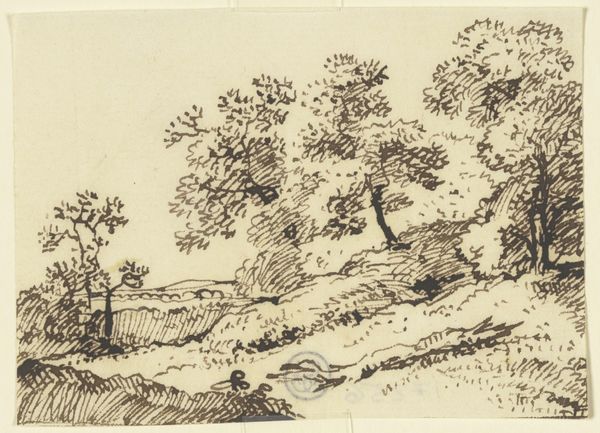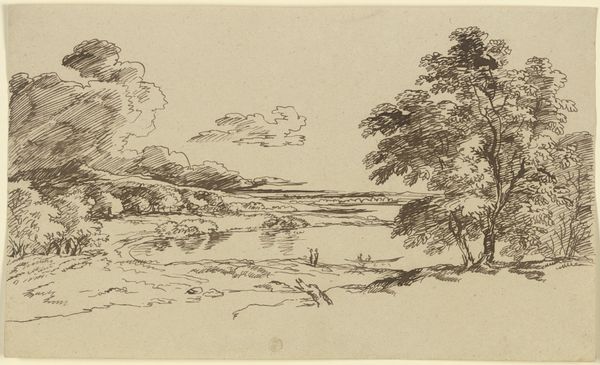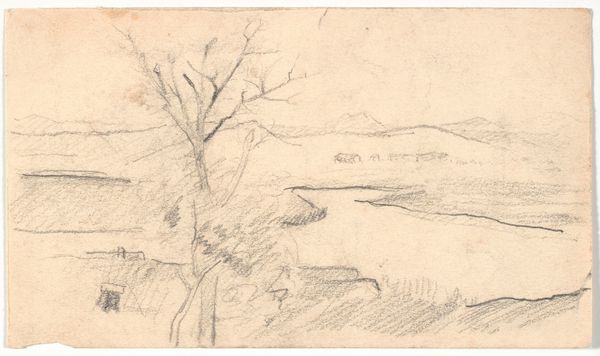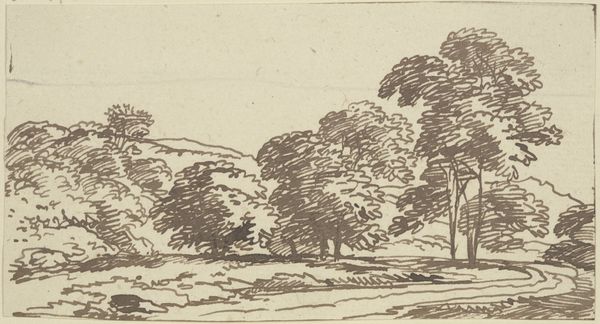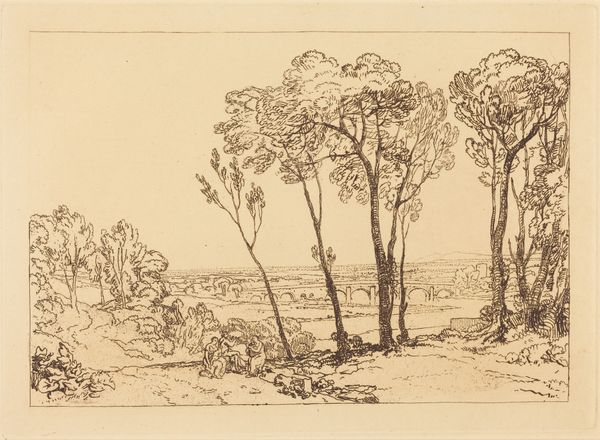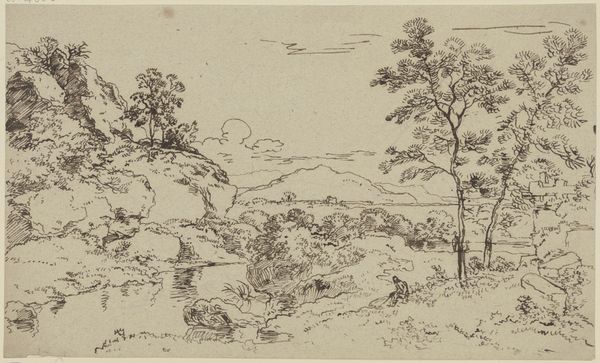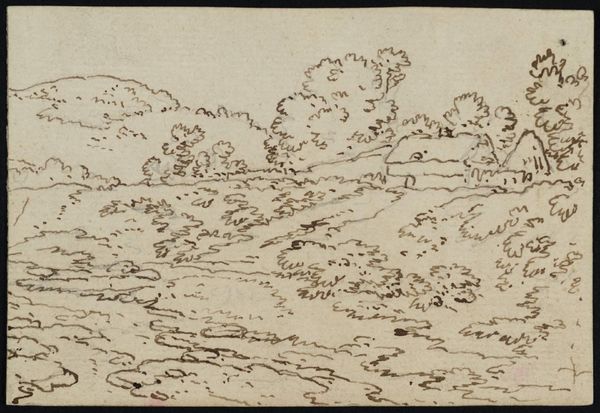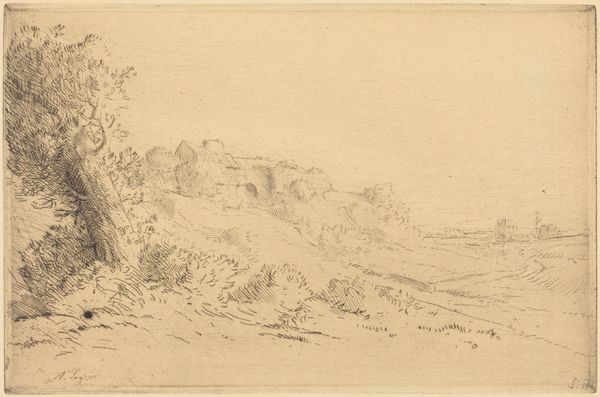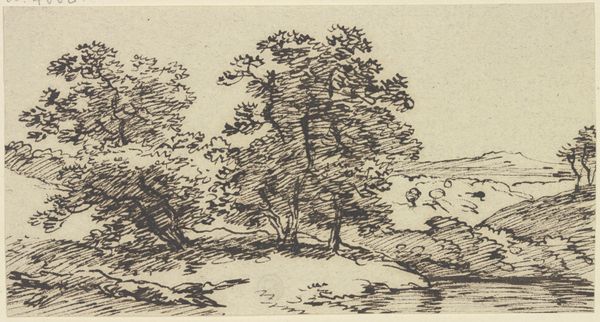
Traveler Reclining on the Grass (Le voyageur etendu sur le gazon)
0:00
0:00
print, etching
# print
#
etching
#
landscape
#
etching
#
figuration
Copyright: National Gallery of Art: CC0 1.0
Editor: Here we have Alphonse Legros' etching, "Traveler Reclining on the Grass." I'm struck by the starkness of the image; the figure is almost consumed by the landscape. How would you interpret Legros' engagement with materiality in this print? Curator: I think that’s a key aspect. Let's consider etching itself. The copperplate, the acid... they're industrial processes adapted for art. Legros isn't just depicting a scene; he's actively participating in a means of production. How does this emphasis on a reproducable method shift our view from 'art object' to 'art product'? Editor: That's a great point. It challenges the idea of the artist as a solitary genius, focusing instead on the system that allows the image to be made and distributed. But is the “art product” necessarily debased as a result? Curator: Not at all! Think of the implications. Etching made art accessible. It put images in the hands of a wider public, people previously excluded from art consumption. Legros is participating in a quiet revolution, isn't he? It shifts agency to the maker, bypassing traditional systems of power in the established art world. Are there are further ramifications from the distribution of the ‘art product’? Editor: Well, mass reproduction democratizes the image. It becomes less about unique value and more about shared visual culture. Curator: Precisely! The materiality, the mode of production, it all ties directly into social impact. Consider the labor involved, too, and how the ‘Traveler’ mirrors Legros, taking rest after creating art. Editor: I never really thought about an artwork as something produced through a process as an extension of the culture surrounding its creation. Thanks! Curator: Absolutely! It makes us consider art as part of a material exchange between artist, object, and consumer. A far cry from the artist-as-god perspective!
Comments
No comments
Be the first to comment and join the conversation on the ultimate creative platform.

